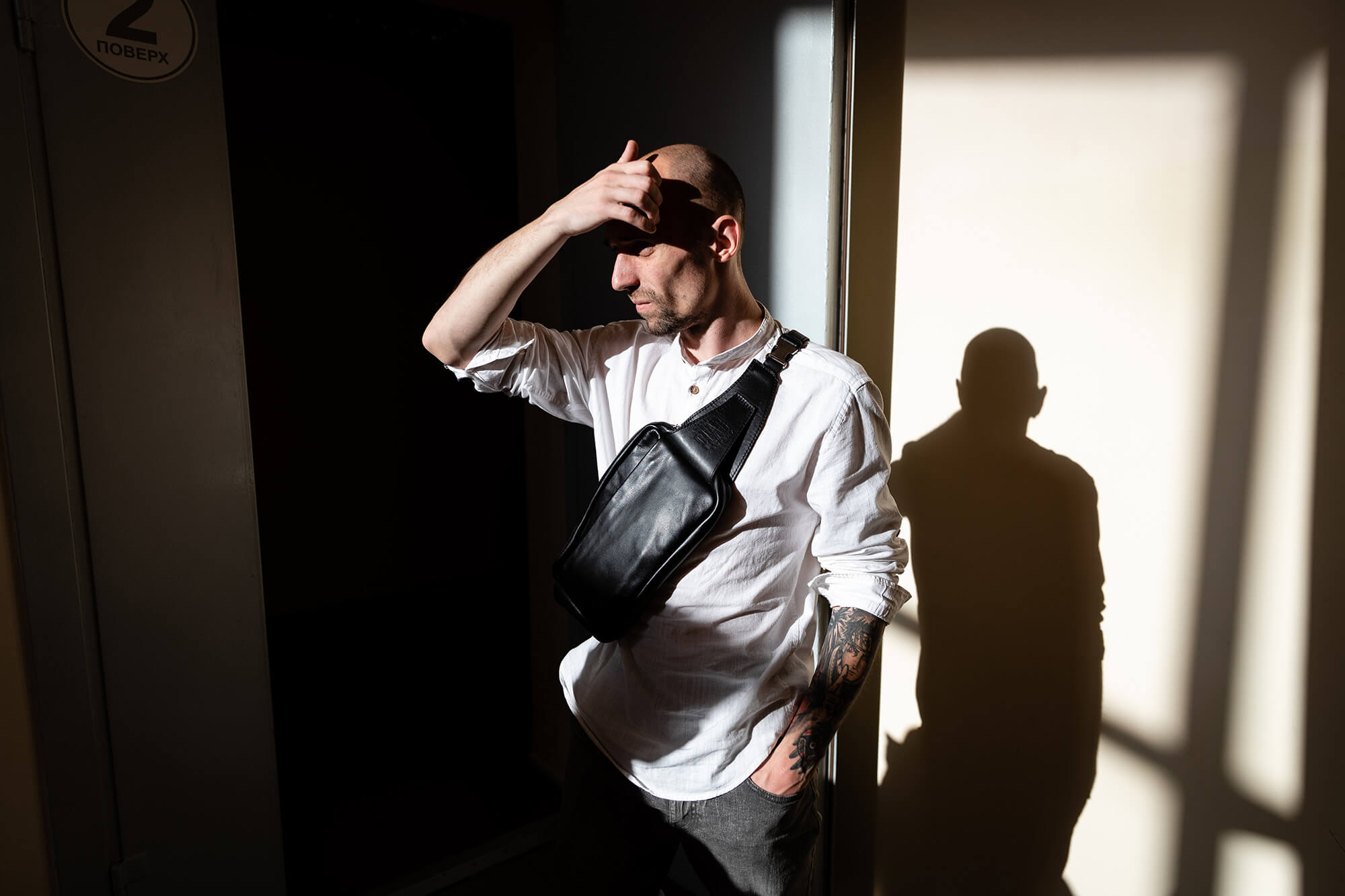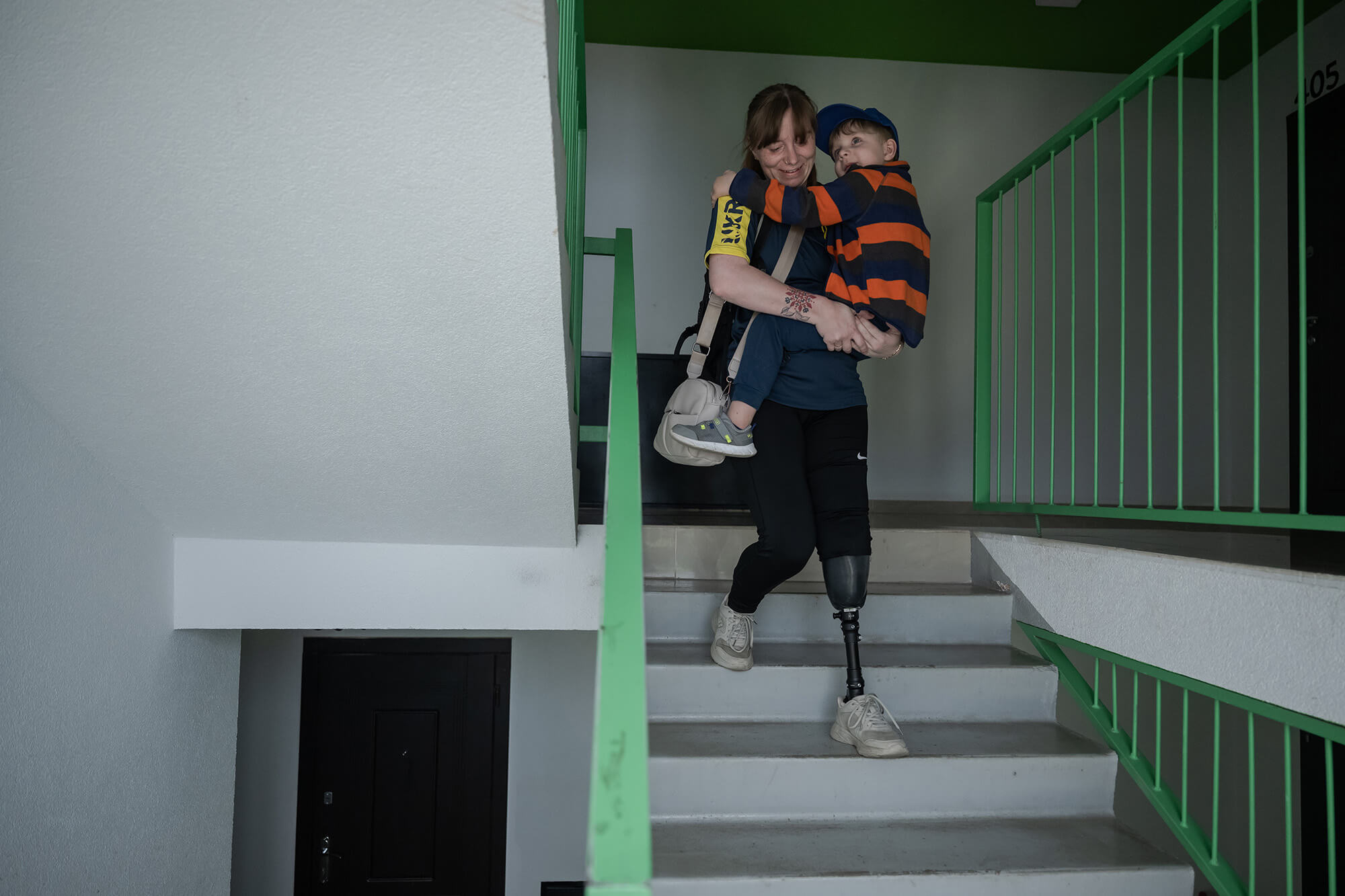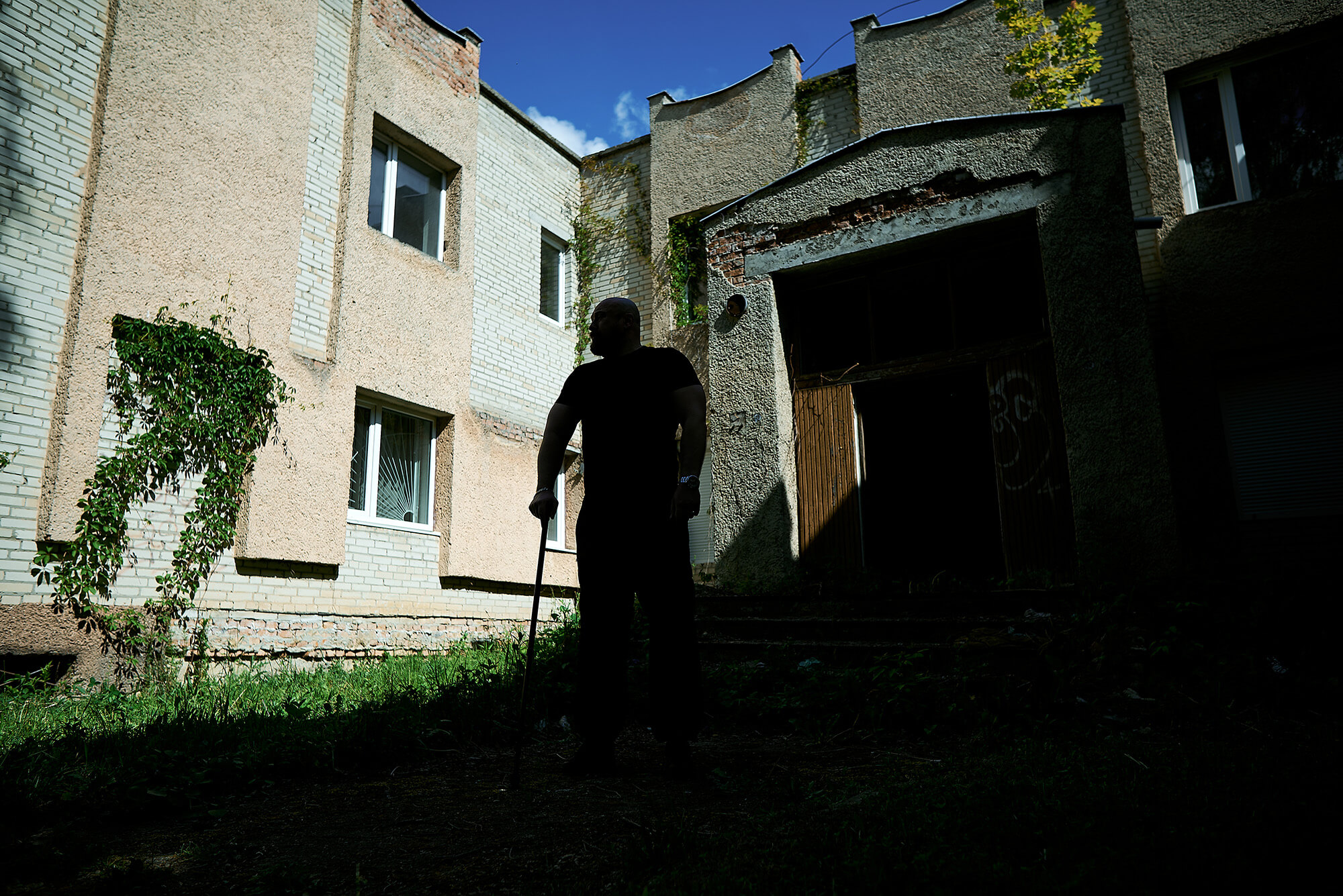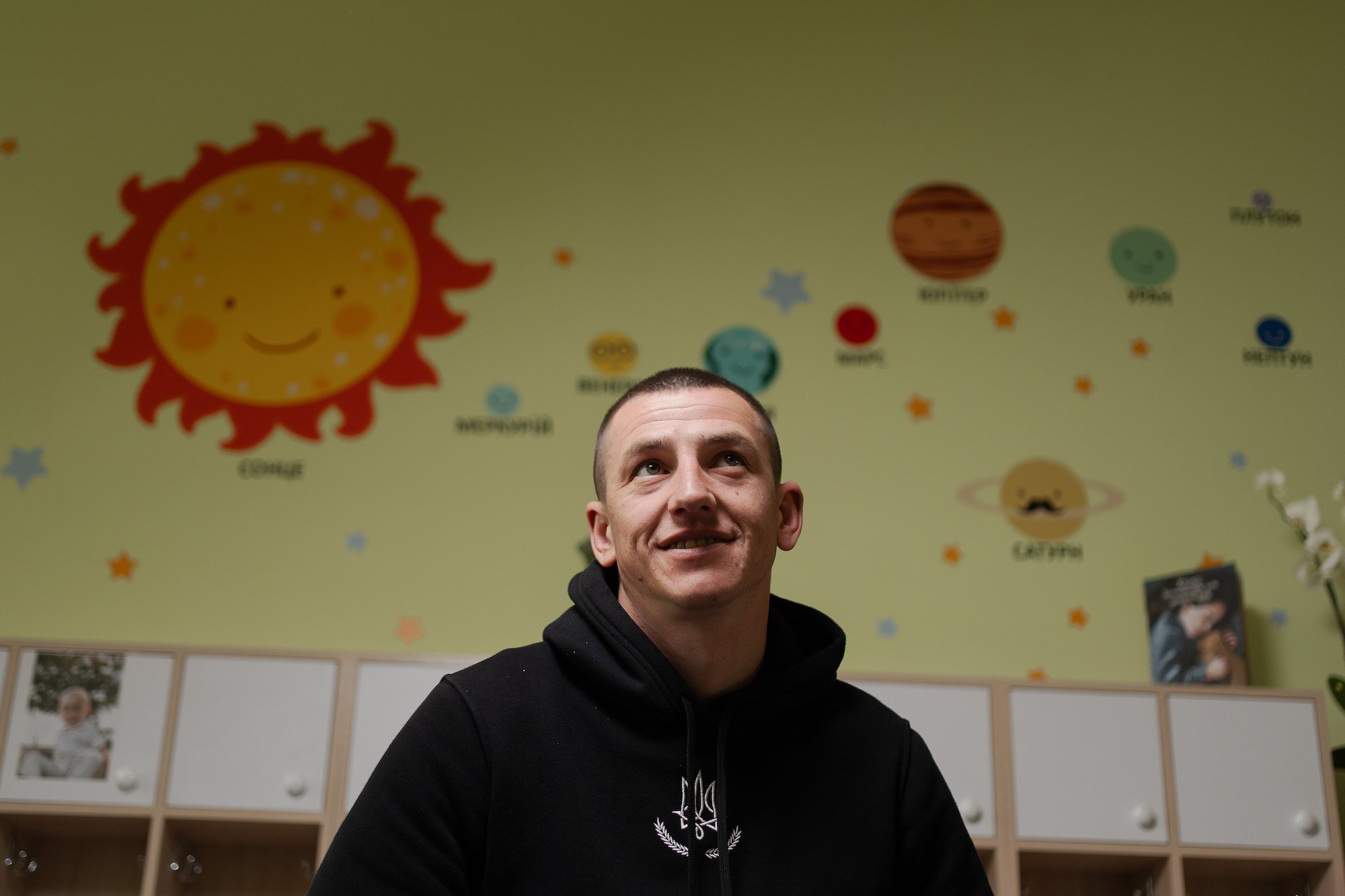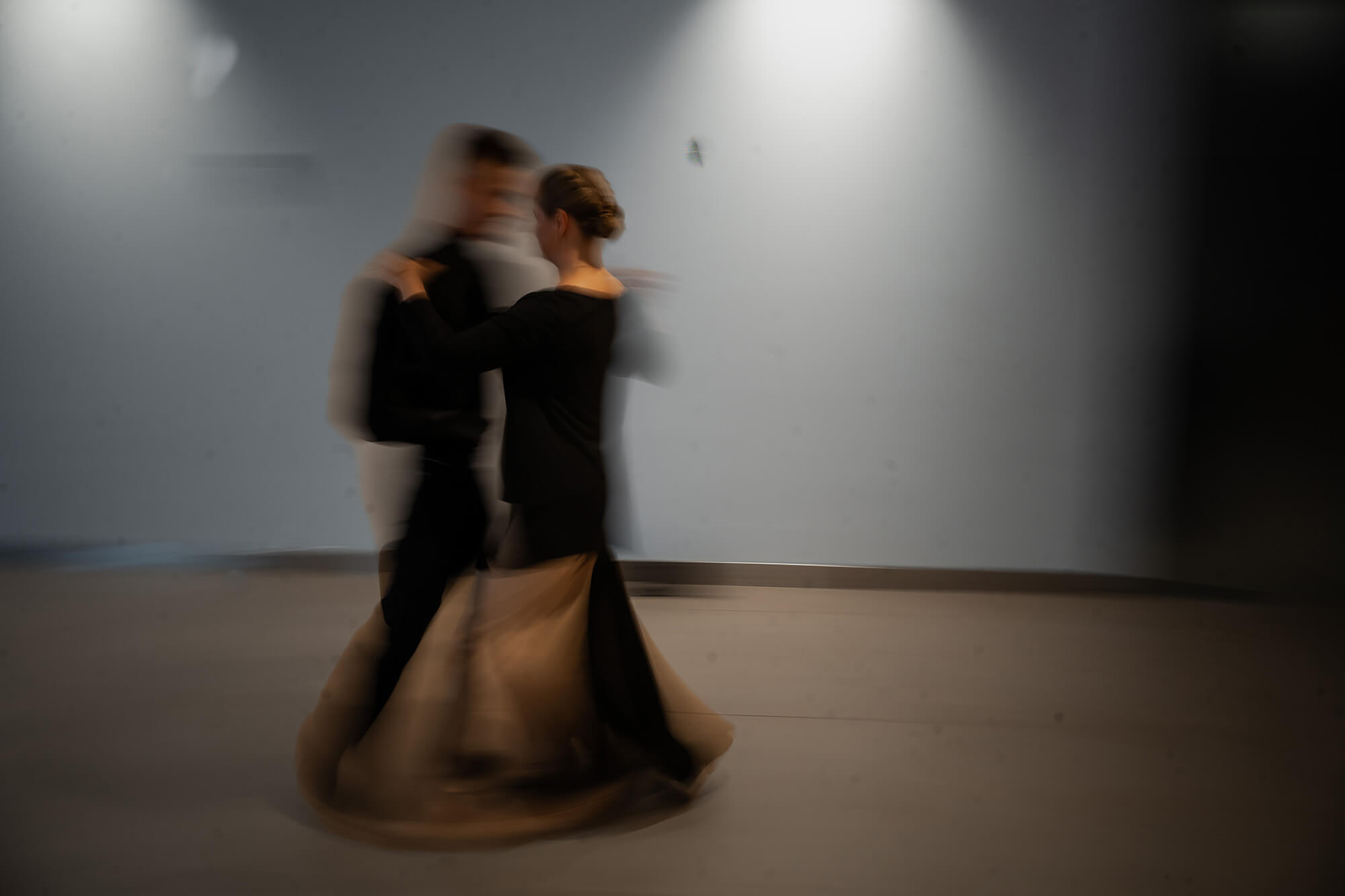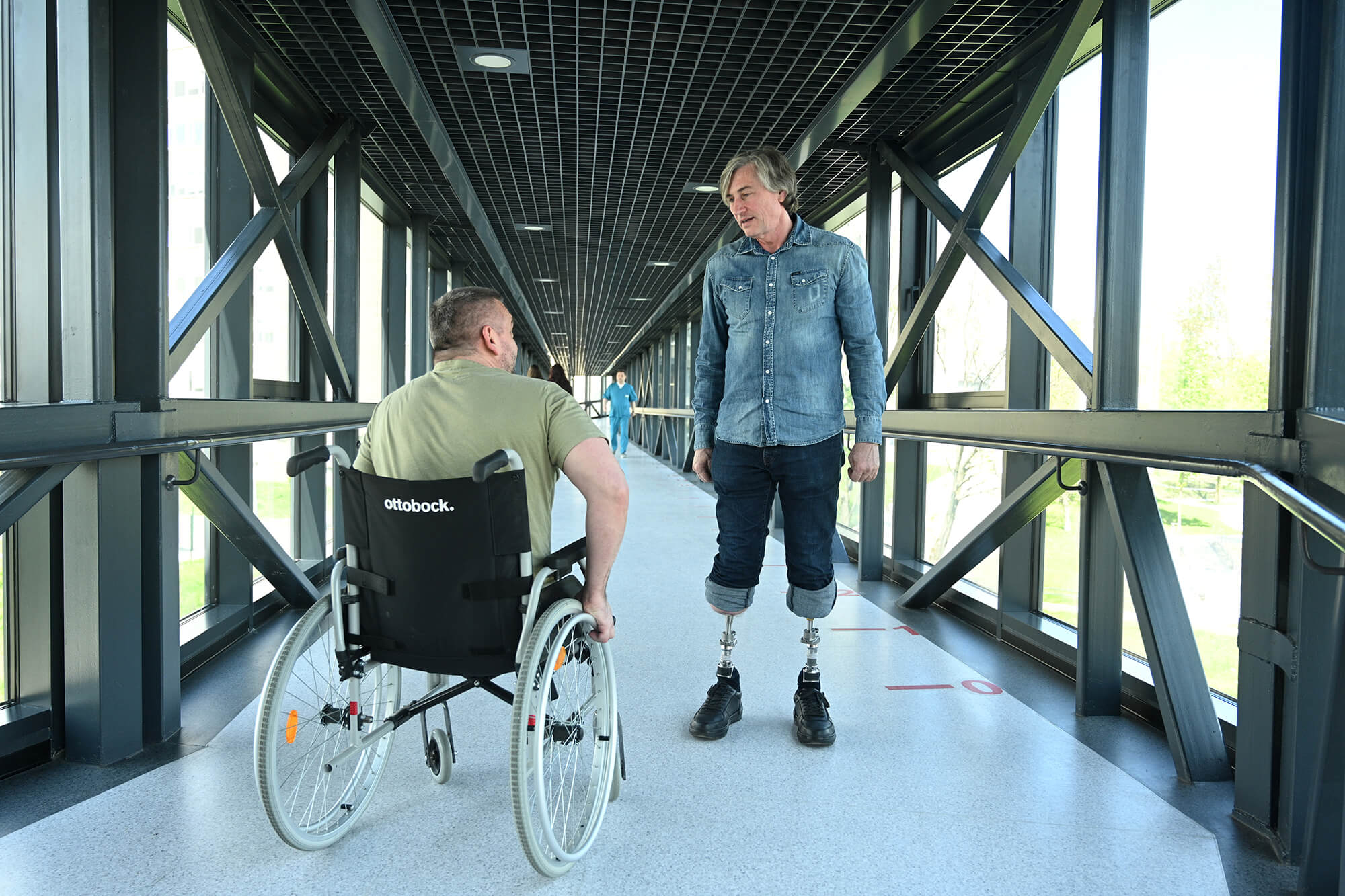
There are no boundaries
If it’s technically possible to have joyful days during a war, so this period can probably be described as such. In the autumn of 2022, the Ukrainian military breached the Russian defensive line and began to move south rapidly, returning the Ukrainian flag to occupied villages and towns in Kherson Oblast. On Nov. 11, the AFU liberated Kherson.
“We had a sense of euphoria when you feel involved in a Great Event,” Ihor Krupnov recalls. This marked the beginning t of the long journey of Ihor Krupnov, an officer and now a veteran of the Armed Forces of Ukraine, toward another feeling—confidence. Confidence in walking, driving, traveling to the ocean, and just living with prostheses implanted in his leg bones. It was the realization that “there are no borders” and that there never will be.
Forever
That day, as the captain of the Armed Forces, a soldier of the 63rd separate mechanized brigade, he received an order to occupy a new line on the coast of the Dnipro-Bug estuary. Together with the commander of his battalion and the chief of communications, he went to inspect the area where his unit was to settle down. Having completed their work, the officers got into a jeep and left for their comrades. And then an explosion came.
The car was thrown into the air and overturned, it landed on the roof and caught fire. Several soldiers ran up to it: they were, by a miracle, nearby, heard the explosion and rushed to help. They were the ones who pulled Ihor Krupnov out of the burning jeep. A bit longer, and only a scrap of metal will be left of this car. Tourniquets were applied to Ihor, first aid was given to his comrade, and both were quickly taken to the hospital in Mykolaiv. The battalion commander had died. But Ihor Krupnov would find out about all this later─he lost consciousness immediately after the mine explosion.
He would regain consciousness only three days later, while being transported from Mykolaiv to Lviv. “I woke up, felt very sick and couldn’t move. Then I understood: something serious had happened… Besides the injuries, there was also a severe contusion. I was literally taken out of that world,” Ihor says.
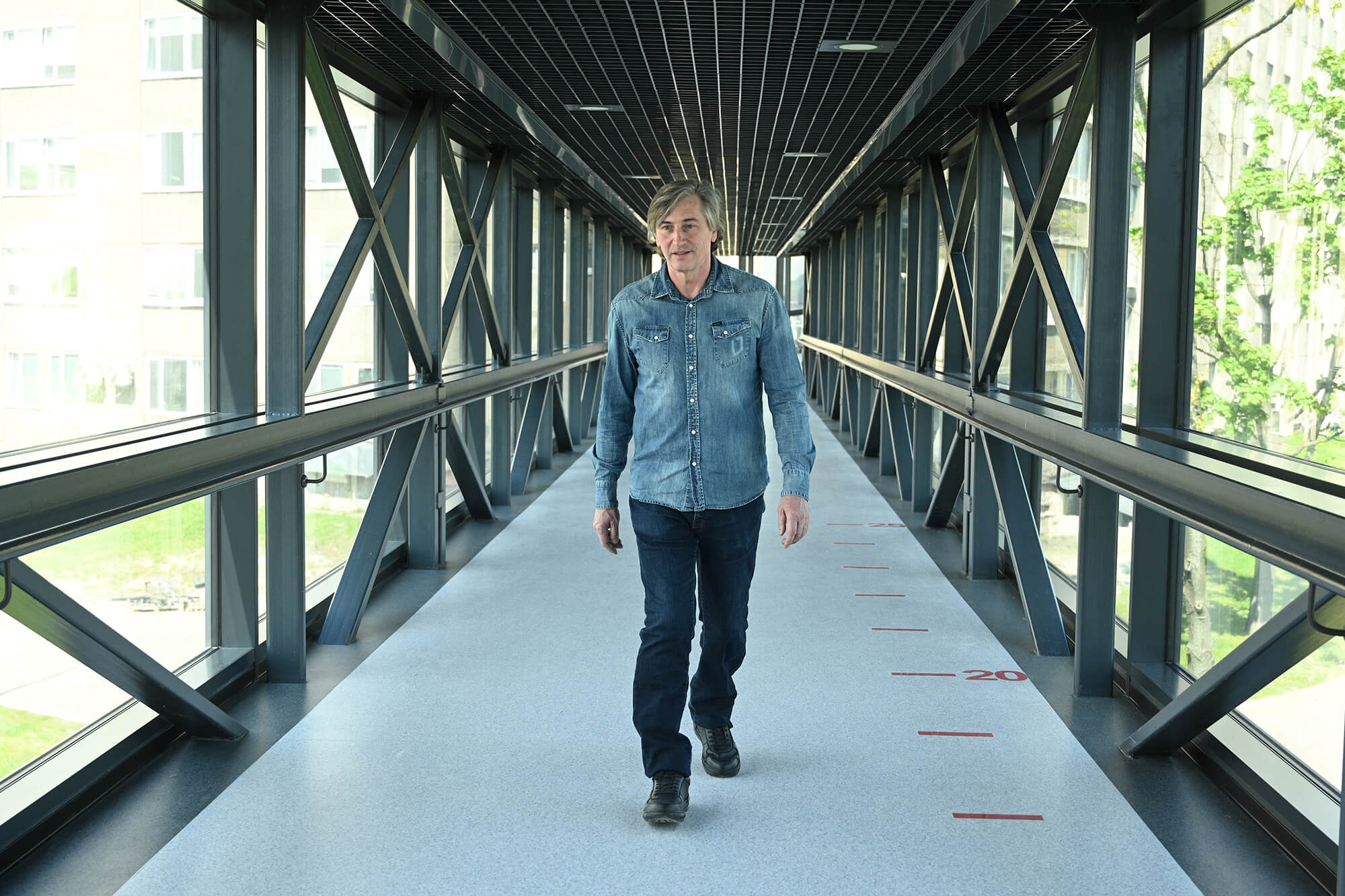
In Lviv, in addition to doctors, his wife will also be waiting for him. She will be by his side all the time: while he will be fighting for his life in the intensive care unit and then when he will hear the sequence of terrible doctors’ verdicts. At first, Ihor was told that it wouldn’t be possible to rescue his right leg, that an amputation would be required.
“It was very difficult to perceive myself without a leg, but I understood that there was no other solution. It must be done in order to survive. But when the question arose about the amputation of the second leg, it was a blow. When the second one was also amputated, the mood waves began: there were days when I was glad that I had got alive at all, and there were days when it was really heavy. At first a feeling arose that you were just going to recover right now after being sick─and everything would be the same like before. And then the realization came that it will be forever.”
In moments of despair, he admits, he was rescued by his wife’s support. Once, trying to cheer up her husband, she said: there is supposedly such rapid development of technology, doctors will certainly invent something and grow new legs for you in ten years. But Ihor didn’t have to wait so long.
“Shining for others, I am burning myself”
Such an inscription in Latin hung on the wall in his mother’s office─she was also a doctor. Later, when Andriy Androsh decided to devote his life to medicine, he recalled constantly these words. Over the years he has seen a lot in the operating room, but he admits: it’s possible to get used to injuries, but never to human suffering. He has never learned to avoid taking his patients’ painful stories to heart, or how to not “carry the work home”.
We meet in the national rehabilitation center, Unbroken, in Lviv. That is where Ukrainians with war injuries are treated and restored to a high quality of life. Andriy is an orthopedist-traumatologist, today he has a busy schedule of operations, he finds time for interviews literally in the gap between them. While I’m waiting for him, several military patients are walking past me in the corridor, all amputees. The guys are going to the gym. One of the patients doesn’t have eyes─he moves with a cane for the blind along the corridor. On his way Andriy greets everyone, saying a few words to them. He is smiling all the time. His patients are both his pain and his inspiration.
“They are all special. Each one of them gave the most precious thing: their health, their future for the sake of others. They’ve gone through hell, and they’re tired of being sick, but if you could see how they’re enduring what has happened to them. When the war started and I began working with the military, I reconsidered the phrase “Shining for others, I am burning myself.” Now I am not burning out; I am recharging from them. Doing my utmost for them, everything in order to return them to their previous life, is my front,” says the doctor, unable to hold back his tears.
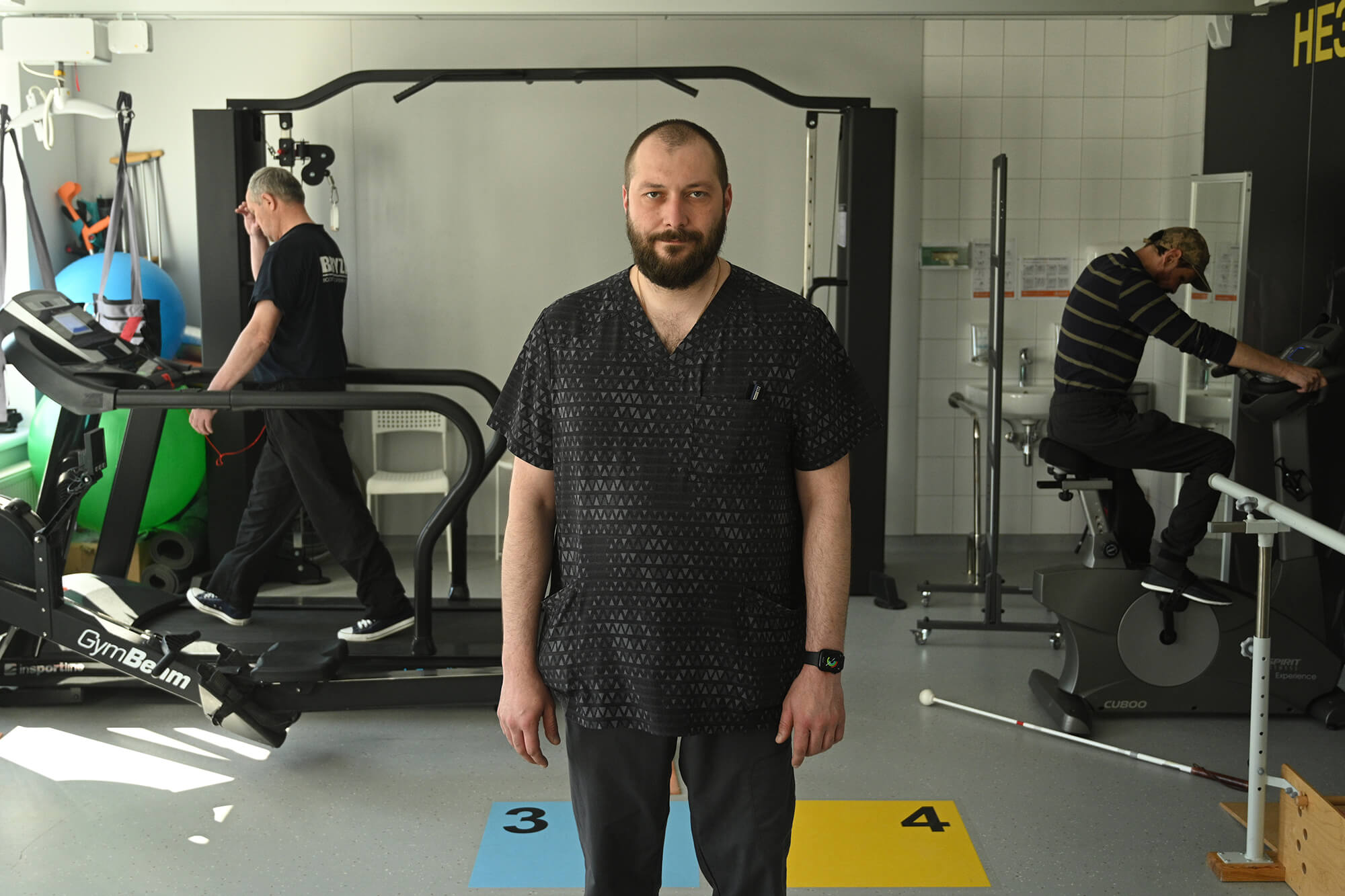
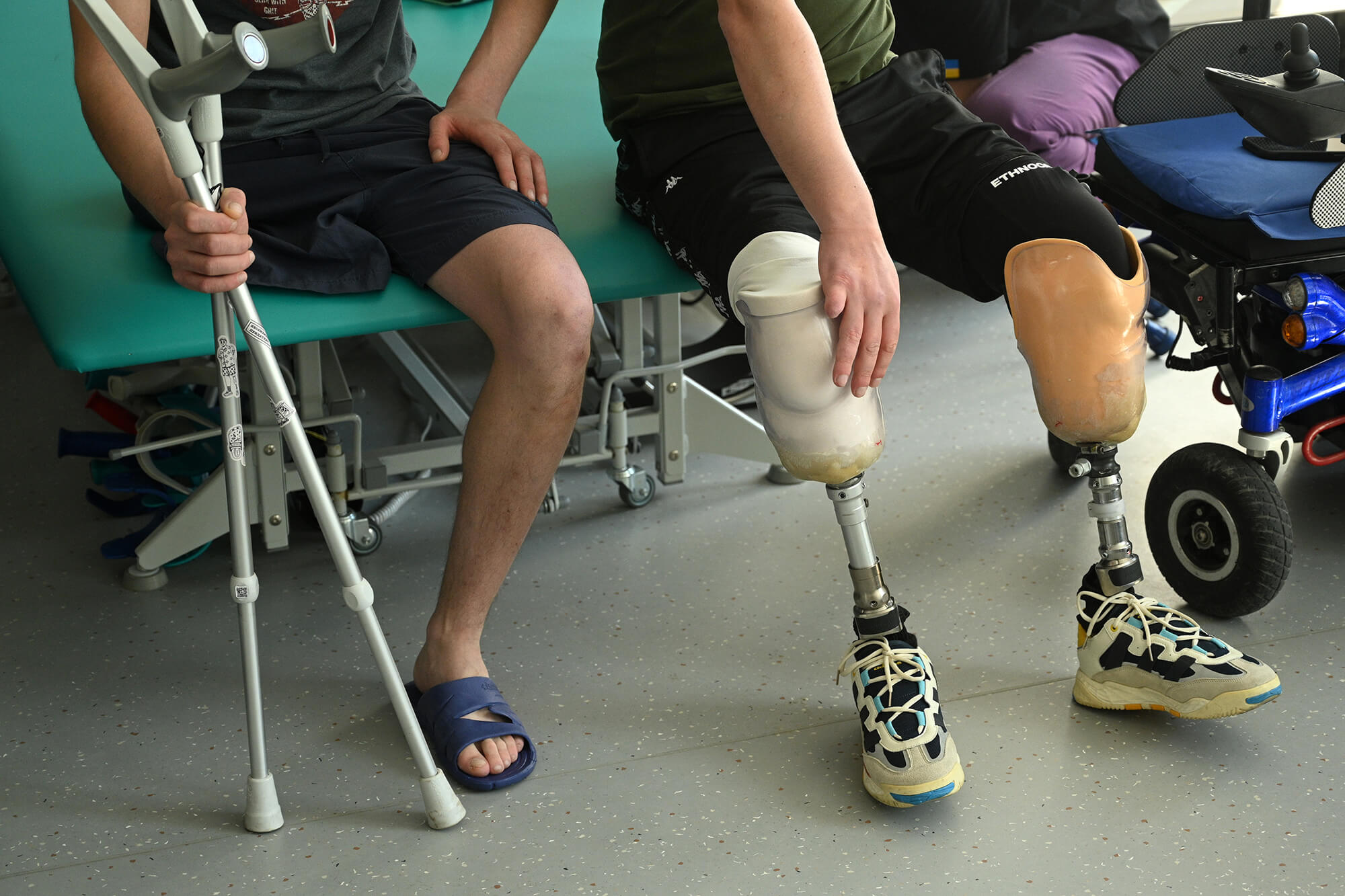
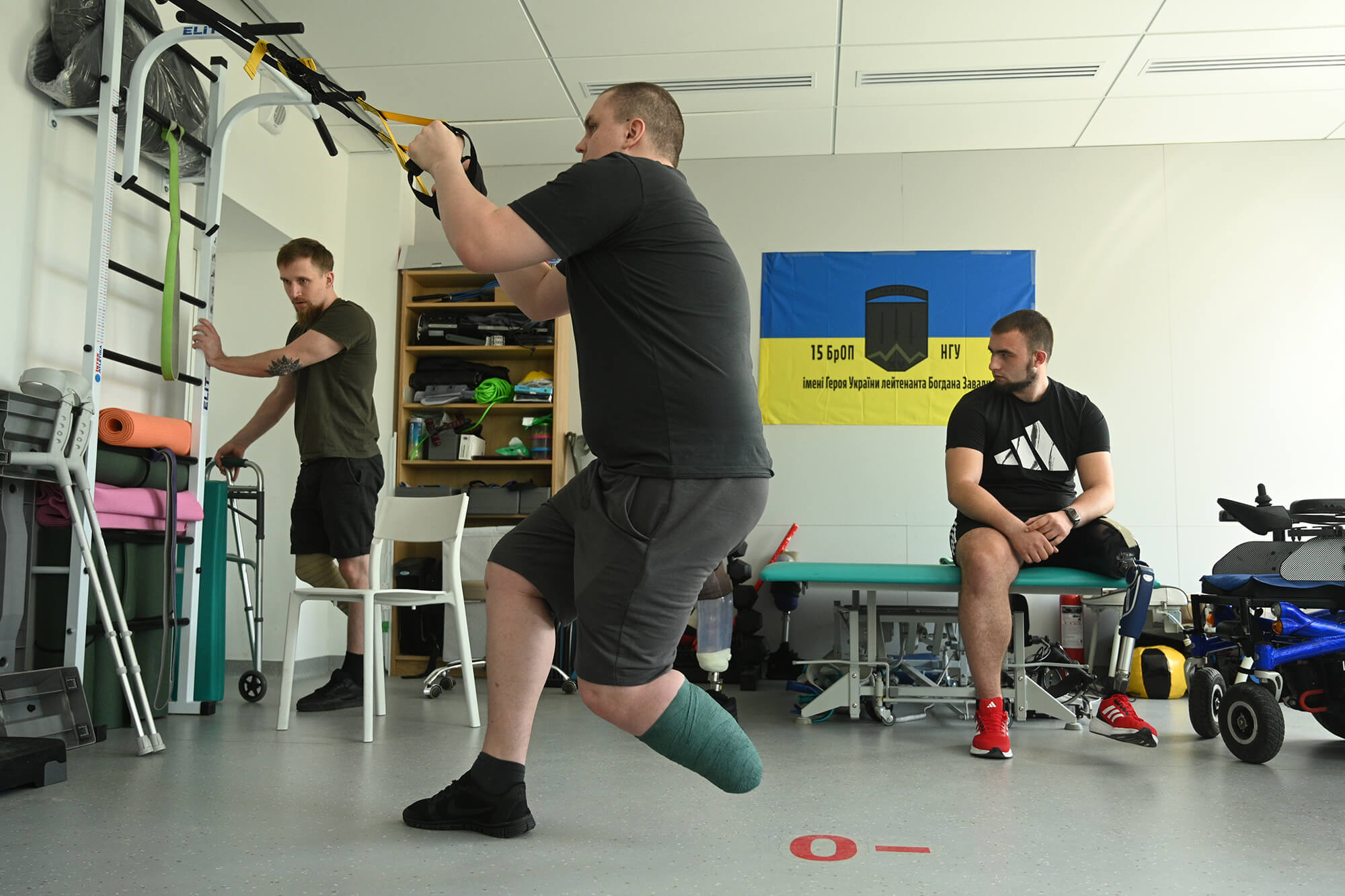
It was the desire to do his utmost that made Andriy learn and master new techniques. Now he is one of the few Ukrainian doctors who performs osteointegration operations.
Osteointegration is a new prosthetic method for Ukraine. It was invented by the Swedish doctor Per-Ingvar Branemark, who performed the first osteointegration operations in the early 1990s. Over the next thirty years, several schools of osteointegration prostheses appeared worldwide.
Simply put, osteointegration consists of two stages: during the first stage, a titanium implant is built directly into the patient’s bone. If the first stage ends well, in three to four months, a metal prosthesis is attached to the implant. Both upper and lower limbs are made into prosthetic appliances in this way.
“Ostheointegration is, first of all, a solution for those for whom classical prosthesis is impossible. Especially for patients with very high amputations. Another advantage of osteointegration is that the patient can feel the surface and control better their movements. Also, there are no problems with chafing, ulcers, skin irritations, the stump doesn’t sweat that often creates suffering for those who have classic prostheses,” the doctor says.
Despite the advantages, this method is not suitable for everyone. Osteointegration is performed only when the wound is healed, the stump is formed and the patient has perfect test results. The operation may be denied to those who had purulent-septic complications after amputation or chronic diseases in the acute stage. Contraindications for osteointegration include patient’s age (you must be between 22 and 65), body weight over 100 kilograms, osteoporosis and diabetes with complications. Anyone considering osteointegration must be aware of the nature of the operation and strictly follow the doctors’ instructions during the healing and rehabilitation stage.
Currently, there are both supporters and critics of osteointegration in Ukraine. Opponents argue that it’s a very risky surgery due to the high risk of superficial and deep infections post-operation, as well as an increased risk of osteomyelitis. They also cite restrictions on swimming in natural bodies of water and the risks of fractures or prosthetic damage in case of loads or impact.
An Australian doctor, Munied Al Muderis, performed the first osteointegration surgery at the Unbroken center. He experienced war firsthand, not just through books and news. In his country he is a real star, not only due to his achievements in medicine, but also because of his personal history.
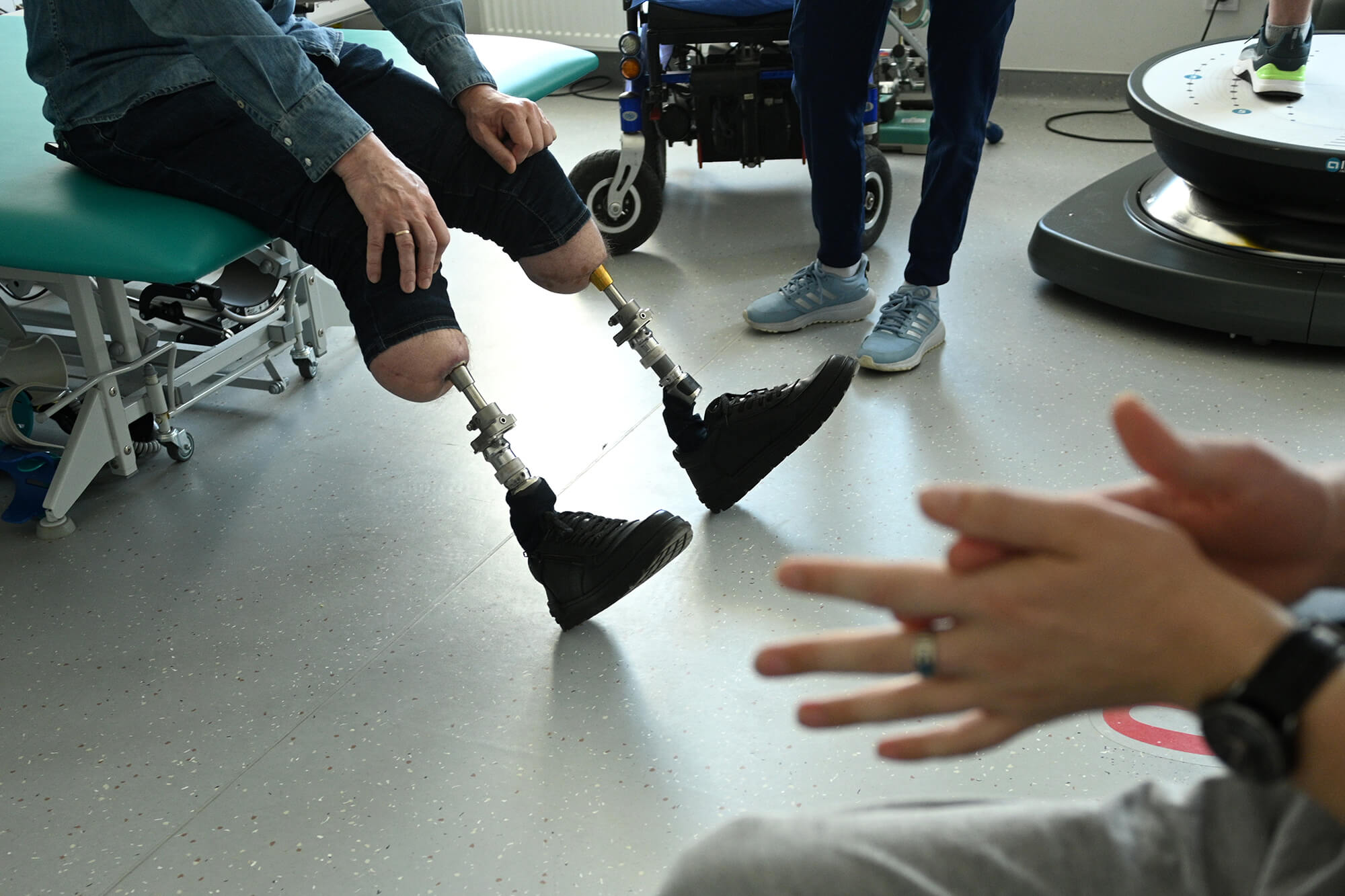
Munyed Al Muderis was born in Iraq under Saddam Hussein’s regime, got a medical education and worked in a hospital in Baghdad. One day, a bus full of men was brought to their hospital and the doctors were ordered to amputate part of their ears as punishment for evading military conscription. When the senoir surgeon refused to carry out the order, he was shot in front of the medical staff. At that moment Al Muderis decided himself to flee the country.
He endured many hardships on his journey to Ausralia, where he was immediately imprisoned as an illegal immigrant. Almost a year later he received refugee status and returned to medicine. Since then, he has devoted himself to osteointegration. He arrived in Lviv for the first time in March 2023, and within a month he, alongside Ukrainian doctors, performed the first osteointegration operation in Ukraine. Ihor Krupnov became his patient.
Revelation
For Ihor Krupnov, this surgery was the ninth since his injury. “Each one took a lot of strength. There was a lot of pain to be endured. Sometimes, I doubted whether I would be able to handle another one. But then my body recovered, and with it, my strength and faith returned: you have to pull yourself together and reach the finish line. On the day of the surgery, one of the doctors came into the ward every half hour to ask if I had changed my mind. But if I’ve already decided, I don’t go into reverse. Only forward!” he says.
On April 10, 2023, Ihor Krupnov was examined by doctors once again, put on a gurney and taken to the operating room. Andriy Androsh was also present in the operating room at that time − watching, learning, memorizing.
The next day doctor Muderis entered the ward and told Ilhor to get up. At first, Ihor thought that he was joking, but he repeated his request. “The blood was still flowing and, my legs were in such a terrible condition, but he insisted he wasn’t joking. I stood on the implants and was very surprised: there was no pain. I hadn’t stood upright for almost half a year, so it was very unusual,” recalls Ihor.
First six weeks, as prescribed by the doctors,Ilhor had to stand on the implants for 20 minutes twice a day. It became a new challenge because after spending many months in a hospital bed, his muscles had atrophied and were not used to the strain After the second stage─fitting the prosthesis itself─Ihor began to learn to walk again under the supervision of doctors and physical therapists. The first steps were difficult as his knees hurt a lot. Then the doctors adjusted the treatment, and the pain started to subside. Within a week Ihor walked with crutches but quickly gave them up.
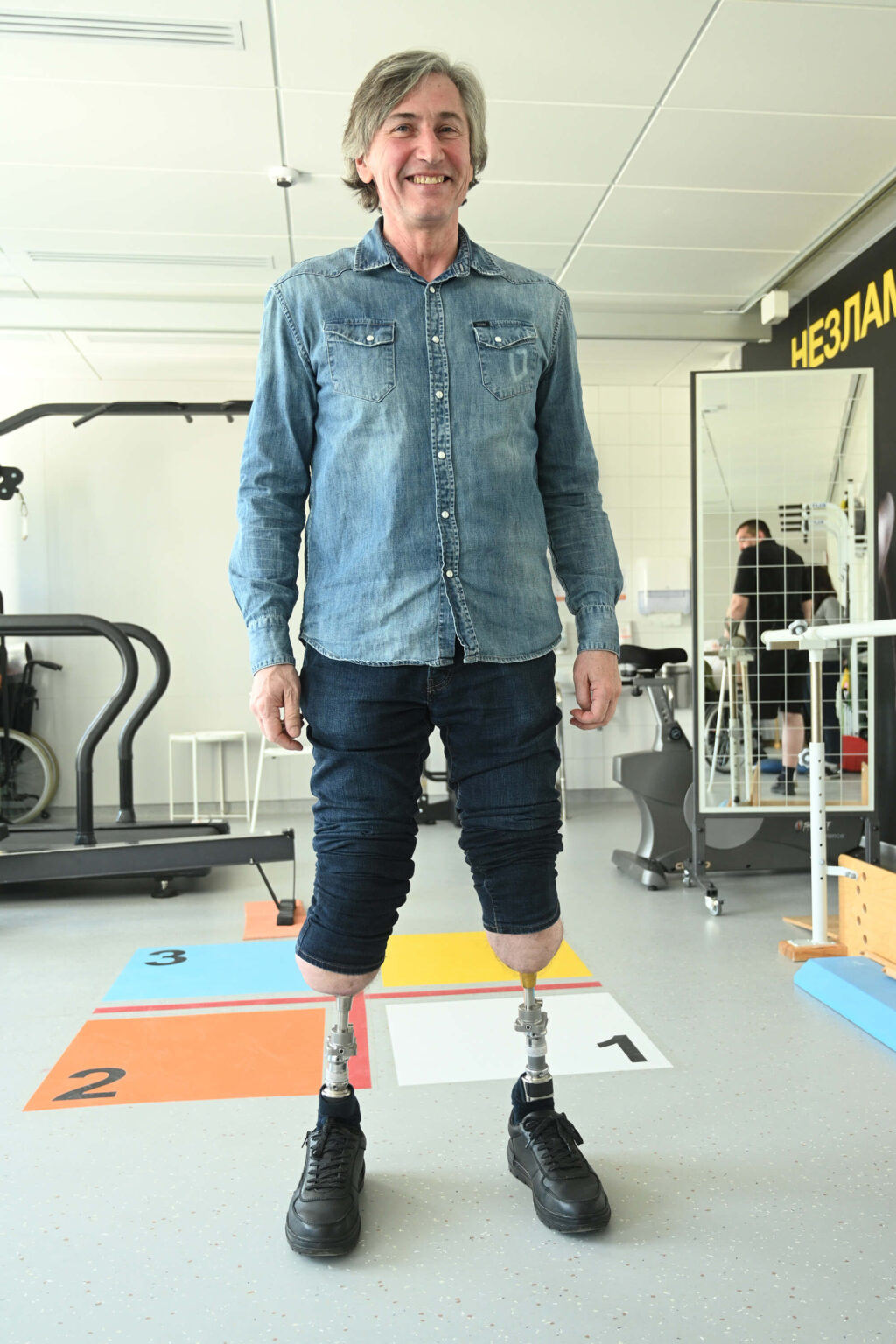
“He is a special patient and a special person. He hs remarkable inner strength. He constantly pushed the limits of his his body and impressed our entire team with his perseverance and results,” recalls Andriy Androsh. “I remember once seeing him from behind, and there was nothing to indicate that he was walking on prosthetics. That moment was a revelation for me.”
A total of four soldiers has already received prosthetics using this method in Lviv. After Ihor’s surgery, another patient was operated on by Andriy Androsh and his team. Before each operation, Androsh tries to focus entirely on positive things. When he washes his hands before entering the operating room, he “goes through” the pre-written plan in his mind once again. And when he approaches the operating table, he forgets everything: there is only a patient, himself and his team.
Returning
When I see him for the first time, I don’t immediately recognize him. Firstly, he looks much younger: now Ihor Krupnov is 58, but he seems at least ten years younger. Secondly, he moves confidently and firmly, and it is hard to believe that only a year ago, he stood on his feet for the first time after being injured. He is happily greeted by all the staff passing by, and not only because they have managed to bond over the months of treatment and rehabilitation. When you hear Ihor’sstory of resilience, you expect to see someone exhausted by months of treatment and numerous operations, but instead, you see a cheerful, energetic man who radiates positivity to everyone around him.
For a few minutes, we enter the gym together, where other wounded veterans are training, and Ihor tells them about his experience. “I didn’t know what it would be like to return to civilian life. I imagined scary scenarios, and thought that it would be difficult for me to even make coffee in the morning. And now it is like I wake upp, it takes me 20 seconds to fasten the prostheses to the implants, and I’m off, walking on my own two feet. I recall this feeling: finally, I have become independent! I felt the same euphoria when I took the wheel of my car and drove off. At that moment, I realized that there are no boundaries.” That’s how his new life started.
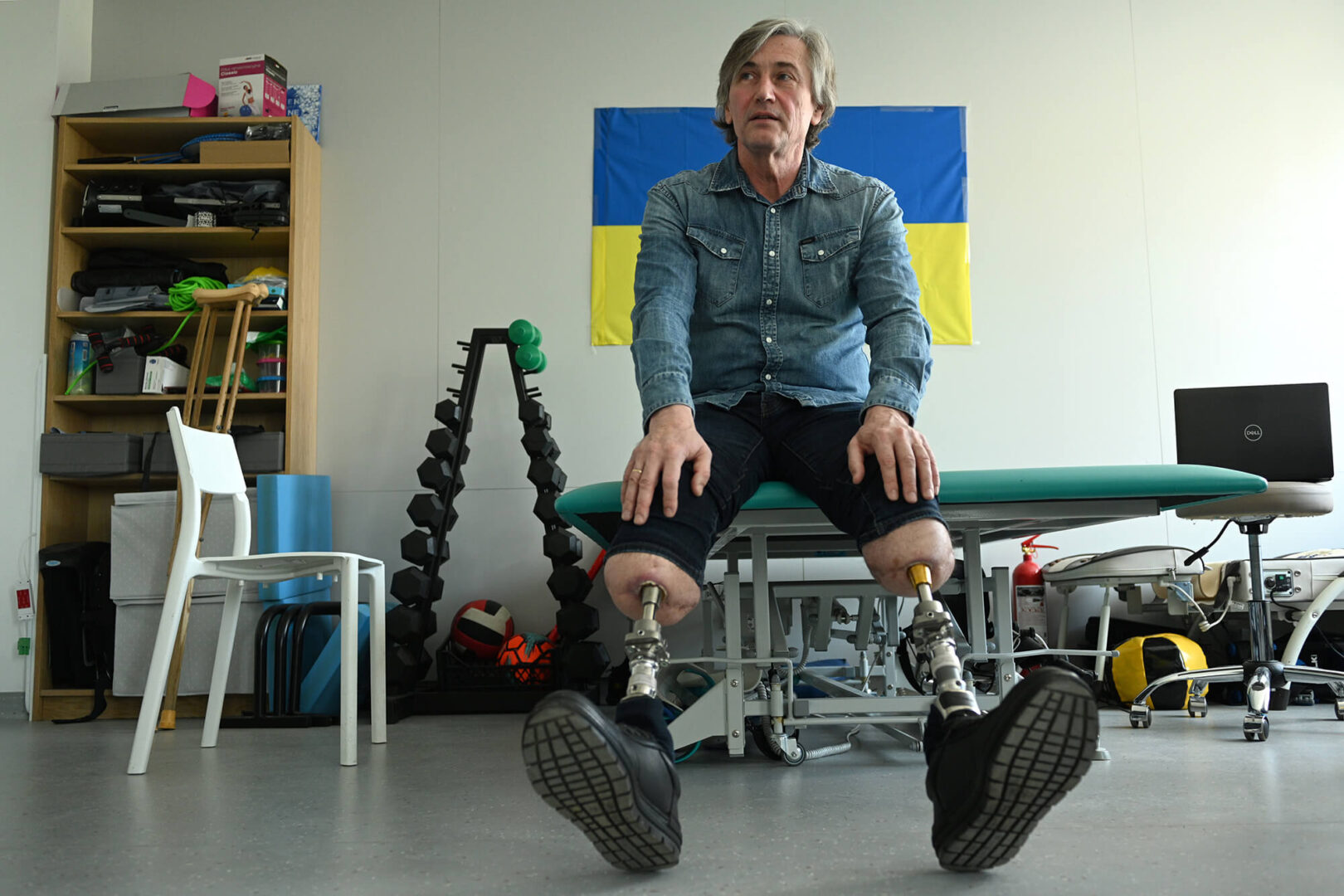
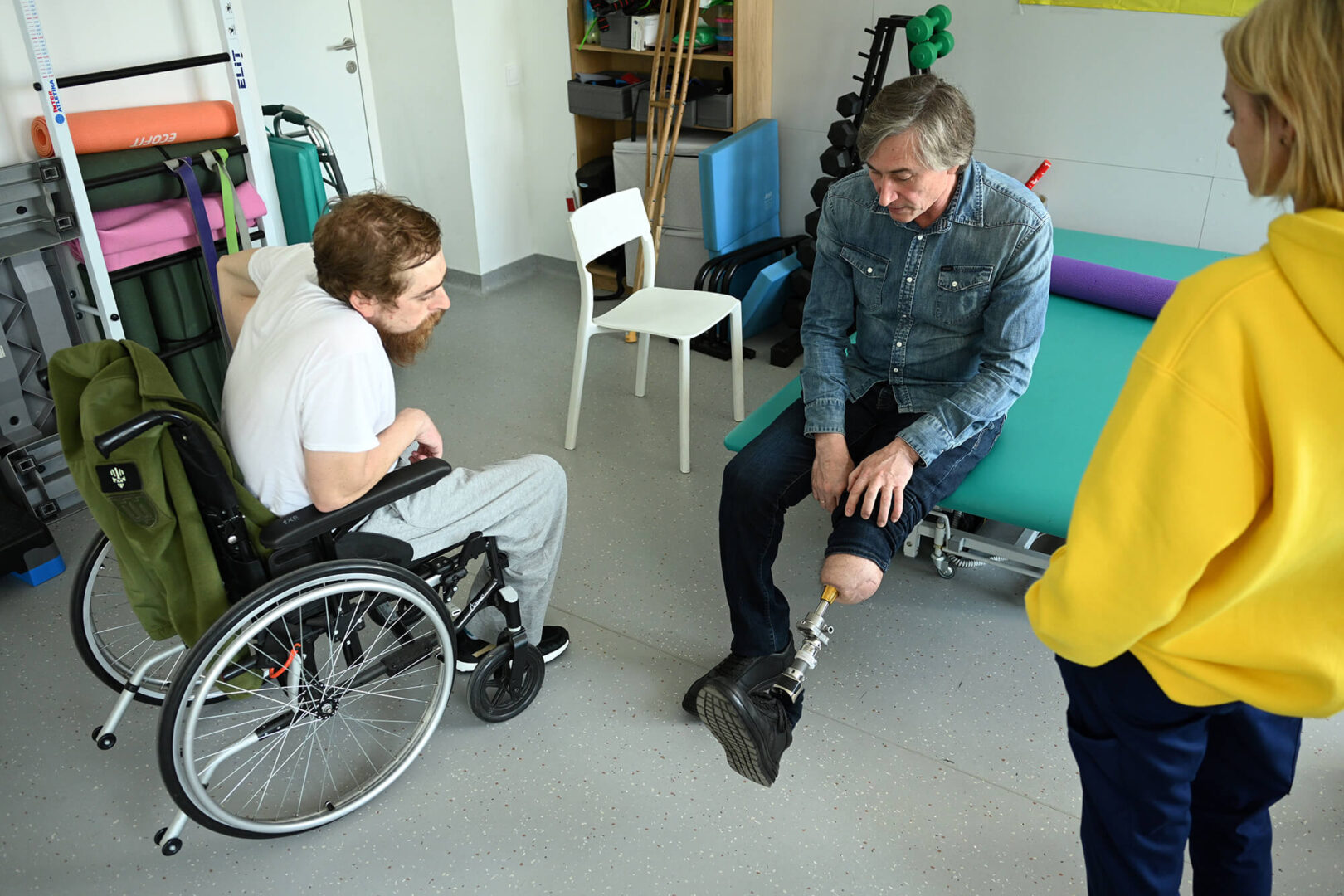
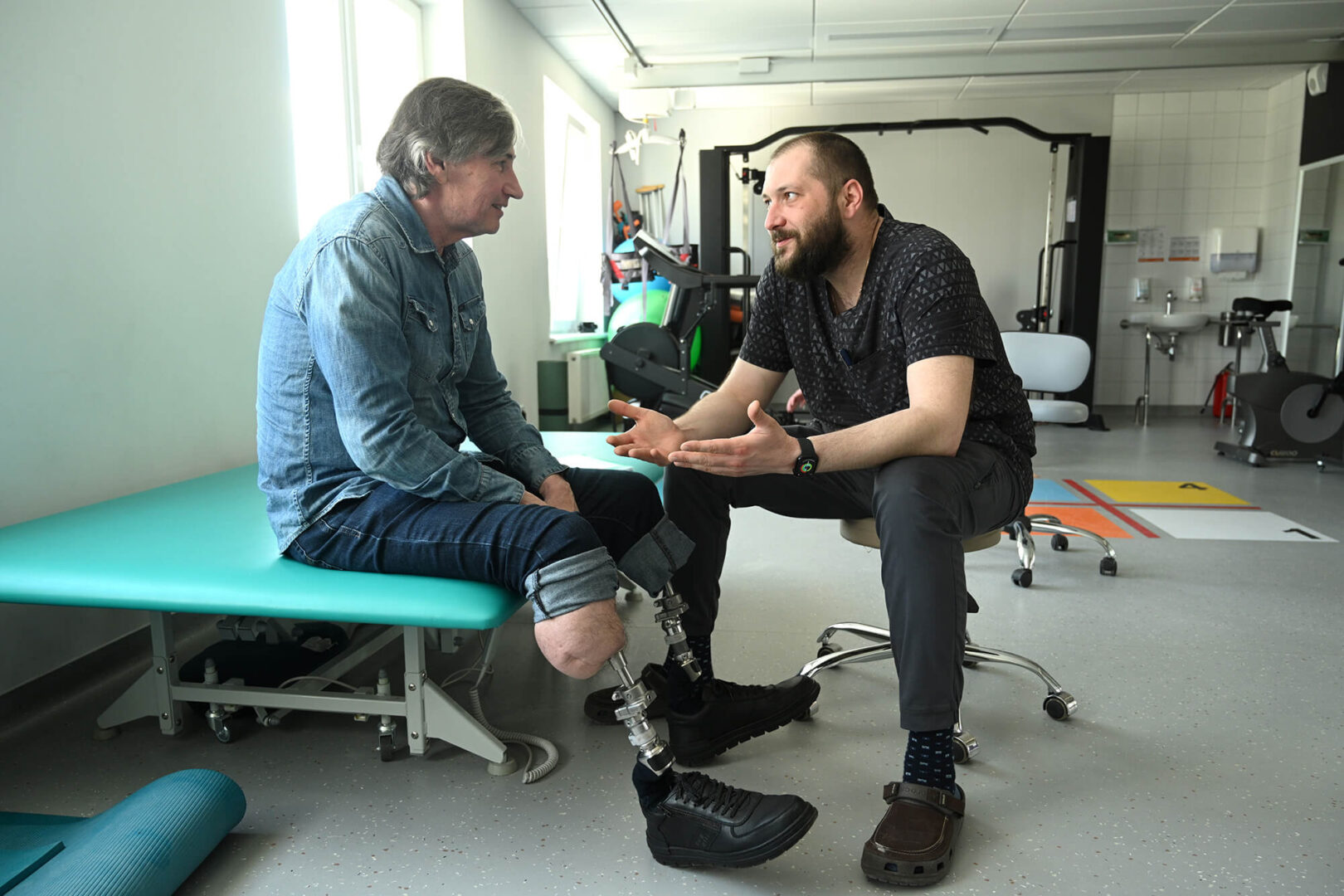
After having got prosthetics, Ihor fulfilled his lifelong dream─he visited the USA. He jokes that when he was a child, under the influence of Soviet propaganda, he dreamed of seeing how “the enemies” lived. As an adult, he was curious to experience another continent and travel around this country. He and his wife visited California. Later they went to visit their daughter in Belgium, and Ihor is excited to recall how long they walked along the coast of the North Sea and how surprised he was to see that he had walked eight kilometers without any difficulties.
In December 2023 he officially retired from the army. Before the war he ran a business constructing swimming pools, and now he is gradually returning to it. The only thing from his past life that Ihor had to give up was running. This is one of the disadvantages of osteointegration─running, hard training and extreme sports are not recomended after implanting prostheses.
“But I will retrain and find another kind of sport for myself !” the veteran laughs. “Everything depends on desire and willpower!”
“The Power to Continue” is a collaborative project between the United Nations Development Programme in Ukraine and Reporters. Our goal is to share unique stories of veterans and civilians who have lost limbs in Russia’s war against Ukraine, and not only found the strength to survive the trauma but also became drivers behind social projects and bold business ideas. We also highlight the stories of people who have helped them along the way. While there are not many of them, these people inspire and speak openly about their experiences, and this might become a starting point for others.
The special project was initiated by Reporters with the assistance of UNDP in Ukraine and financial support from the European Union as part of the “EU4Recovery—Empowering Communities in Ukraine” project. The opinions, recommendations, assessments, and conclusions expressed in these materials do not necessarily reflect the official position of UNDP, the EU, or their partners.
Have read to the end! What's next?
Next is a small request.
Building media in Ukraine is not an easy task. It requires special experience, knowledge and special resources. Literary reportage is also one of the most expensive genres of journalism. That's why we need your support.
We have no investors or "friendly politicians" - we’ve always been independent. The only dependence we would like to have is dependence on educated and caring readers. We invite you to support us on Patreon, so we could create more valuable things with your help.
Reports130
More